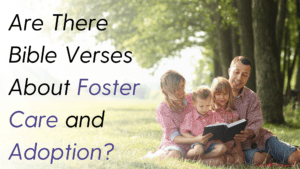Traditional parenting techniques don’t always work for a child who has experienced trauma — and most adopted children have experienced trauma. An adopted child and their parents often need more support than they can get from only talk therapy. That’s where therapeutic parenting comes in: techniques that parent a child’s brain, not only their behaviors.
Dr. Daniel J. Siegel and Dr. Tina Payne Bryson describe the brain as having two parts: the Upstairs Brain and the Downstairs Brain.
- The Upstairs Brain thinks, reasons, and evaluates. You teach the Upstairs Brain. (And once you’ve been taught something, like reading or riding a bike, it doesn’t take much upkeep.)
- The Downstairs Brain reacts and responds. This is the fight, flight, freeze, and faint part of the brain and where our habitual memory lives. You train the Downstairs Brain. (Habitual memory is also known as procedural memory. It applies to things that we largely do without thinking but that have a use it or lose it quality — like playing an instrument. We have to keep practicing, keep training.)
Therapeutic parenting identifies reactive patterns inside a child’s brain and how those patterns influence behavior. Once you understand how your child’s brain functions, you can address concerns at that level before dealing directly with the child’s actions. Your aim is to help your child transition to a responsive mode where they make a conscious choice to engage in acceptable behavior.
As you consider the best way to connect with your child, look into these therapeutic interventions (also called modalities, tools, methods, and approaches) that are available beyond talk therapy. Then proactively find a trained therapist who can help.
Trust-Based Relational Intervention (TBRI®)
“TBRI is an attachment-based, trauma-informed intervention designed to meet the complex needs of vulnerable children. It uses Empowering Principles to address physical needs, Connecting Principles for attachment needs, and Correcting Principles to disarm fear-based behaviors.” (Watch an overview of these principles.)
While the intervention is based on years of research in attachment, sensory processing, and neuroscience, the heart of TBRI is connection. When parents look for any therapist to work with them and their adopted child, they should look for a therapist who is professionally trained in the TBRI approach.
Occupational Therapy
This form of therapy addresses how a child engages with their environment — educationally, socially, and in normal activities of daily life. Occupational therapy is a foundational piece for any child coming from a difficult background; it helps them connect brain and body processing so they can successfully express and execute functional behaviors.
Occupational therapy works to improve fine motor skills (movements that use small muscles, like writing and zipping a jacket), gross motor skills (movements that use large muscles, like skipping or throwing a ball), motor planning (how we remember and perform steps for a specific movement, like tying shoes), and self-regulation (how to manage emotions, behavior, and body movement when we get upset).
Sensory Processing Therapy
Healthy sensory functioning helps with activities of daily living and social interactions. Sensory processing therapy helps a child organize and respond appropriately to information they get from their five senses. It also helps them balance their bodies and have spatial awareness.
A child’s ability to successfully communicate depends on their ability to process sensory input correctly. When a child’s brain is running too fast, sensory activities can calm their brain and help them regain control of their body. Many adoptive families designate space in their homes to sensory processing so that their children have tools to help regulate behavior. (For example, some families have a trampoline or a climbing wall. A child might also benefit from a weighted blanket or sensory swing.)
Physical Therapy
Physical therapy uses exercise, massage, hydrotherapy, and other care to treat or manage physical disabilities, injuries, or pain. It is an alternative or complement to medications, surgery, or radiation.
Children who experience trauma may have poor muscle tone or might lack physical coordination. For example, if a child’s muscles are tense from having lived in survival mode but then begin to relax in a safe home, the child might experience muscle tics or tremors. Physical therapy can help the body release stored trauma.
Speech Therapy
This intervention helps improve a child’s speech when they have difficulty because of hearing loss, deafness, brain damage, or speech delays due to trauma.
Because children from hard places have brain processing issues, they might sound as if they are communicating, but they often don’t use words correctly or don’t understand the words they do say. A speech therapy evaluation can identify existing issues. (A speech therapist can also pinpoint and help resolve eating or swallowing difficulties.)
Experiential Therapy
Experiential therapy is often used to treat trauma, eating disorders, behavioral disorders, developmental delays, anger management, and grief. It can also be helpful when working with children who are on the autism spectrum or who have been diagnosed with attention-deficit/hyperactivity disorder (ADD/ADHD).
This type of therapy has many advantages:
- It’s more interesting and engaging for a child than traditional talk therapy.
- It helps a child become more integrated by engaging their mind, body, and emotions at the same time.
- Therapeutic work doesn’t depend only on a child’s conversational ability. (This is especially helpful if language skills are delayed or not yet fully developed.)
- Experiences and activities provide opportunities for a trained clinician to observe a child in situations where they act more like themself because they’re “just playing.” (In other words, the child isn’t focused on the therapy itself.)
- Emphasis is on doing a healthy behavior instead of just talking about it. A child’s new insights are encouraged to become actions — and then practiced until they become second nature.
Experiential Therapies:
Experiential therapy is an umbrella term for several therapies:
Play Therapy
Play therapy is a way to connect with a child and honor their present developmental level. A trained therapist uses the powers of play to help a child prevent or resolve psychosocial difficulties and achieve optimal healing and development.
Play therapy is used most often with children ages 3 to 12. It incorporates many forms of play activities to meet therapeutic goals. During these relaxed sessions, the therapist pays attention to how a child’s brain is processing and how the child expresses themself.
Theraplay Therapy
Theraplay facilitates healthy child/caregiver attachment. It’s different from other therapies in that it has structured games a therapist demonstrates for the parent; the parent then plays the game with a child at home.Most of the therapy occurs at home between parent and child with occasional counselor check-ins.
Equine Therapy
Equine (horse) therapy is also known as equine-assisted therapy (EAT). It creates an environment that improves a child’s physical and emotional wellbeing related to psychological, social, and medical issues.
Horses have social and responsive behaviors similar to those of humans, so a child can easily connect with them. Equine therapy can help a child learn boundaries and can also build confidence, self-efficiency, communication, trust, perspective, social skills, and impulse control. (Other animals, such as dogs, can also be used in a therapeutic way.)
Art Therapy
Art therapy enriches the life of a child through active art projects, applied psychological theory, and human experience within a therapeutic relationship.
Trauma is stored in the nonverbal right hemisphere of the brain — the same part of the brain that performs tasks related to creativity. Consequently, art therapy can be valuable in healing trauma. It’s generally used with a child who likes to express themself in a creative way, or with a child who can’t use words to communicate effectively. (Think of it like this: Coloring can be to a child what journaling is to an adult.)
Wilderness and Adventure Therapy
Wilderness therapy (also known as adventure-based therapy, wilderness experience programs, or challenge course programs) uses the natural environment to create conversation and stimulate change.
This type of therapy typically involves a combination of techniques in a wilderness setting. The group is given a series of challenges to be resolved either together or individually. Wilderness therapy can be especially helpful for teens because it places them in an unfamiliar environment where they tend to be more open to input from adult leaders. (Programs are usually conducted with a group of 8-12 people and can range in length from one day to eight weeks.)




















